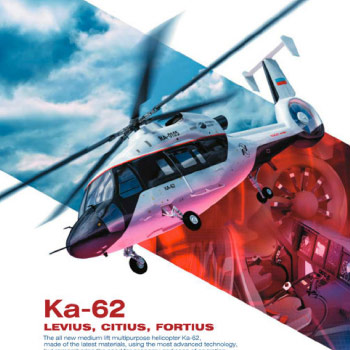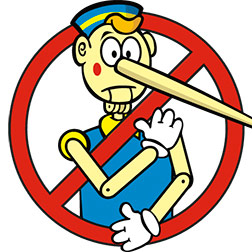Category: BDN
Branding: It’s in the Bag
 Would you pay $9,000 for a handbag? How about $150,000 or more?
Would you pay $9,000 for a handbag? How about $150,000 or more?
Plenty of people do. In fact, the Hermès Birkin bag, created in 1984 for actress/singer Jane Birkin, is so coveted that it commands these prices and is reputed to have a 36-year waiting list. But why?
The handbag has come to represent success, achievement and status. As one handbag blogger wrote, “The Birkin is more than just a bag, it’s a lifestyle.”
The woman who buys a Birkin is not buying a bag that will serve a function in her life. She is buying into a brand — her perception of what the bag stands for — and she will willingly pay a premium to join this exclusive club.
Irrational, you say? Most certainly. And that is the power of a great brand. A great brand can drive profits, big profits. It can protect you from your competition. And it’s nothing more than perception. Pretty amazing.
Build your brand. Shape audience perception. And then laugh all the way to the bank, preferably carrying a Birkin stuffed with cash.
Do you know what your brand stands for to customers and prospective customers? Do you guard it like the irreplaceable asset that it is? How can you leverage branding to improve your business performance?
Critiquing An Aerospace Advertisement: Russian Helicopters Ka-62
 I thought I’d take a look at an ad from a relative newcomer to the western markets, in particular an ad for the Ka-62 helicopter from Russian Helicopters.
I thought I’d take a look at an ad from a relative newcomer to the western markets, in particular an ad for the Ka-62 helicopter from Russian Helicopters.
In Monday’s, I talk about how an ad must perform three tasks, in succession, to be effective: cause the reader to see, understand, and feel.
To see the ad means to stop long enough, in flipping pages or pixels, to take an interest in what might be represented.
The Ka-62 ad does that for me. It is populated with elements that are arranged to clearly indicate the nature of the ad — it’s about a helicopter. A dynamic view of a helicopter, a bold and clear headline (simply the name of the product), and obviously enough copy to suggest I may learn something, but not so much that I’m afraid to venture into reading it. I’m intrigued and willing to take the next step: spend a few moments deciding if I can learn something of value.
Could the graphics and copy have led to an ad about training, or support, or ITAR issues, or insurance? No. The background image of the flight deck, and the tail rotor, and some other murky effect or graphic, all blended together, is not entirely clear in what is being offered, but the aircraft on top, pointing to the headline, prevents confusion.
What is a little confusing is the subhead: levius, citius, fortius. I assumed it to be Latin, and figured it was interesting, but with a poor comprehension of the language, I felt a bit ignorant. That feeling could have been ameliorated if the body copy provided the translation but it didn’t and so, right where you, ad creator, want to be creating understanding, you have placed a stumbling block. (By the way, it translates to smoother, faster, stronger; reasonable but pretty much wasted by presenting it in a dead language.)
The body copy is otherwise fine. Nothing fancy, and a little vague in its claims, but sufficient to add to my understanding of the product and leaving me with enough questions to be interested in learning more. Maybe not now, by calling or emailing or even typing in the URL, but on my radar to be alert for other ads, stories, press releases, etc.
So, did my seeing and understanding lead to a change in my feelings? Yes.
I knew almost nothing about the product, and now I’m primed to learn more as the opportunities present themselves. I feel better about the company, too, because the graphics and the writing were appropriate to the marketplace and rewarded me for the time I spent. If more ads from Russian Helicopters support this style and approach, I will be open to spending time with those ads. And if other media from them support the same brand image, it will strengthen their brand in my mind. And even if I determine this product is not for me, other offers from them will be viewed with an accepting eye.
Mission(s) accomplished.
7 Steps to Campaign Success in the Aerospace Market

- Goals. What are you trying to achieve with this campaign? Who are you targeting?
- Research. Talk to your customers. What are their pressures, concerns, needs and drivers? What marketing tactics work with them? The aerospace industry is very different than other markets so it’s important to find out what works for your specific audience.
- Personas. Use your research to create a representative “persona” of each group you are targeting. This helps to visualize that person.
- Content. Map out your content based on what your persona research has outlined for you. Address your customer’s problems.
- Tactics. Your research told you where your customers engage and the best way to influence them. Plan out your tactics based on this and use your story map to tie it all together.
- Measurement. Make sure you’ve included a tracking mechanism on all tactics to measure success. If this isn’t tracked, then how do you know if your methods worked?
- Reassess. If you didn’t get the success you were hoping for, change a headline, try a different tactic, check your customer list contact info . . . keep adjusting until it works.
Developing Honest And Effective Messaging
 Are you writing/designing/exhibiting/strategizing to reach and engage your intended audience of prospects in the most effective ways possible? Or are you doing what is expected and what you believe you can sell internally?
Are you writing/designing/exhibiting/strategizing to reach and engage your intended audience of prospects in the most effective ways possible? Or are you doing what is expected and what you believe you can sell internally?
If you are developing communications for the boss you are missing the mark — and missing a great opportunity to demonstrate expertise and deliver a marketing program that really works.
Successful marketers are fearless and confident. Are you? Tell the truth, or Santa will leave you a lump of coal.
The True Cost of Creativity
 Except for the very smallest of jobs, creative fees are always a small fraction of total costs (printing, media, etc.). The incremental difference between having professional, outside support or not will typically only increase costs from 5 to 10% on a small brochure or ad, and less than 1% on an annual report or multi-page web site. When the true costs of internal preparation — salaries, overhead, lost productivity— are added up, outside services nearly always cost less, not more. What’s more, external specialists likely have more refined skills than internal resources. Viewed from the bottom-line perspective, a small additional investment in design and writing quality produces an ROI that is sure to warm the heart of even the toughest CFO.
Except for the very smallest of jobs, creative fees are always a small fraction of total costs (printing, media, etc.). The incremental difference between having professional, outside support or not will typically only increase costs from 5 to 10% on a small brochure or ad, and less than 1% on an annual report or multi-page web site. When the true costs of internal preparation — salaries, overhead, lost productivity— are added up, outside services nearly always cost less, not more. What’s more, external specialists likely have more refined skills than internal resources. Viewed from the bottom-line perspective, a small additional investment in design and writing quality produces an ROI that is sure to warm the heart of even the toughest CFO.
Sincere thanks to Cameron Foote of Creative Business, who gave BDN permission to share his thoughts on the true cost of creativity.
Keeping Up With The Joneses: Analysis On B2B Marketing Spending
 How much are other B-to-B companies spending on marketing?
How much are other B-to-B companies spending on marketing?
40% report marketing budgets of under $1 million
21% report marketing budgets ranging from $1 million to $4.9 million
17% spend $5 million or more
Where are they spending their money?
Trade shows: 20% of budget
Television Advertising: 17%
Print Advertising: 15%
Inside Sales: 14%
Direct Mail: 14%
This information was gleaned from a survey of dedicated marketing executives in B-to-B businesses with revenues ranging from less than $100 million (nearly half of respondents) to $1 billion or higher. 35% of respondents described their businesses as Manufacturing, High-Tech, and Primary Production.
How much are you spending? How does your budget measure up?
Source: MarketingProfs Research Insights, MarketingProfs, LLC
Technical Tip: Photography Resolution
 Resolution matters.
Resolution matters.
We dislike having to tell clients that the photos they have sent us are not large enough to work for the intended use. Here’s a very basic guide that may help.
For typical press releases, a photo/file of 5” x 7” @ 300ppi is sufficient.
Photos for printing with stories in magazines, for creation of advertisements, or for brochures should be 300ppi at the size they will be used, or larger. Photography for trade show graphic panels should be as large as you can get them – and usually that’s not really enough resolution to adequately support the finished size. If you can manage 100ppi at the size used on the panel, that’s just right.
Files may be RGB .jpg files if saved at the highest quality setting. Your printer will want CMYK, but those don’t compress well and the file size is larger for the same image.
Photos downloaded from the web after a Google search are generally not of high enough quality to be used for anything more than a placeholder, and are usually copyrighted and cannot be used commercially without permission.
A Warning to Aerospace Marketing Professionals About Copyright Infringement
![CopyrightStamp_45323893 [Converted].eps](http://66.147.244.184/~bdnaeros/wp-content/uploads/2014/02/copyrightstamp_350-300x262.jpg) Does the end justify the means? Too often, in the world of aerospace marketing, the answer is yes. And that’s not a good thing.
Does the end justify the means? Too often, in the world of aerospace marketing, the answer is yes. And that’s not a good thing.
In their zeal to be noticed and remembered, some marketing people are willing to bend the rules, and, worse, break the law, in regard to intellectual property.
Sometimes it’s ignorance. Not everyone has a marketing background. Some came from the military. Others are engineers.
Case in point. Military marketers at a major OEM wanted to use the song “Bad Moon Rising” in a product video. They just didn’t want to pay for it. So they got permission to use the song once, then proceeded to break all the terms of the agreement, making copies, showing it to groups, and violating copyright laws left and right.
Photo usage is even more problematic, as there is a stubborn resistance to pay for photography and sometimes outright refusal to respect the usage rights for same.
Copyright infringement is a crime that impacts the livelihood of designers, authors, composers, songwriters, and filmmakers. Frankly, it’s theft. And we’re better than this.
Aerospace is a special industry full of good professional people who have integrity and most of us genuinely want to do the right thing. Here’s a reliable resource for more information: copyright.gov
Some More Things We Know About Aerospace Marketing
![Aerospace head_65223433 [Converted].eps](http://66.147.244.184/~bdnaeros/wp-content/uploads/2014/02/aerospacehead_350-300x212.jpg) We know that aerospace companies are conservative and tend to copy one another in their marketing efforts. Everyone’s logo is red, white and blue. Everyone has a Skunk Works, or a Phantom Works, or a Hawk Works. Use this to your advantage and distinguish yourself from the crowd of lookalikes.
We know that aerospace companies are conservative and tend to copy one another in their marketing efforts. Everyone’s logo is red, white and blue. Everyone has a Skunk Works, or a Phantom Works, or a Hawk Works. Use this to your advantage and distinguish yourself from the crowd of lookalikes.
We know that lots of Aerospace and Defense companies do not have a Crisis Communications plan and are completely unprepared should an incident or accident occur. The ramifications could be devastating.
We know that lots of aerospace and defense companies are spending money on ad placements in unaudited magazines that won’t do them any good. If you don’t know exactly who is receiving a given publication, you should not be advertising there.
We know that not everyone in our industry believes in marketing and that some think it’s a necessary evil. We also know that the business that finds itself immune to the necessity of marketing sooner or later finds itself immune to business.
Some Things We Know About Aerospace Marketing
 We know that it’s not unusual for aerospace and defense companies to have a “if we build it, they will come” mentality. That may have been true at one time, but today there are too many providers, and technology is changing too quickly, to make that assumption. It’s not enough to have good technology. You must be prepared to tell the marketplace why your technology is better and what it can do for the customer.
We know that it’s not unusual for aerospace and defense companies to have a “if we build it, they will come” mentality. That may have been true at one time, but today there are too many providers, and technology is changing too quickly, to make that assumption. It’s not enough to have good technology. You must be prepared to tell the marketplace why your technology is better and what it can do for the customer.
We understand that million- and billion-dollar aerospace and defense sales take years to cultivate, and that’s one reason a powerful, enduring brand is so critically important to this market.
We know that there’s a leadership gap in the American aerospace industry. We can make a case for why you should fill it and what that could mean to your company.
We know that engineers are not marketing people. And marketing people are not engineers. We know that marketing people shouldn’t design airplanes and engineers shouldn’t design ads.
We know it’s more important to show your products and technology than it is to talk about them. In person is best. Video demonstration is the second choice. If you have to choose between advertising and demonstrations, you’ve got to go with the demo.
Over to you. What do you know about aerospace marketing?










